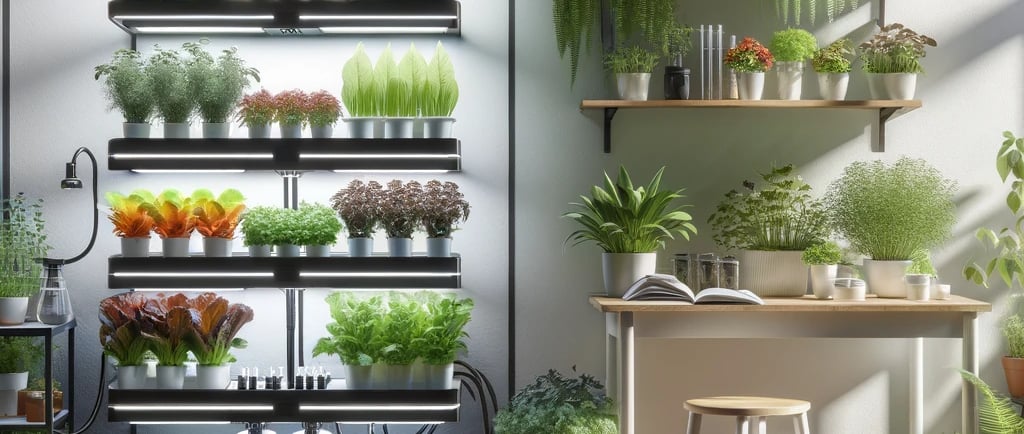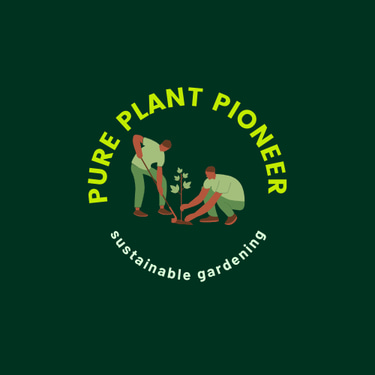Add your promotional text...
Choosing the Best Indoor Gardening Method: Hydroponics vs. Soil
Explore the best methods for growing indoor plants with our comprehensive guide comparing hydroponics and soil gardening. Discover the pros and cons of each method to determine which is best for your indoor gardening needs. Whether you're a beginner or a seasoned gardener, learn about faster plant growth, water efficiency, and more with our detailed analysis. Perfect for those looking to optimize their indoor garden, this article helps you understand the advantages and challenges of both hydroponics and soil to maximize your green space efficiently.
4/23/20243 min read


Introduction Indoor gardening has surged in popularity as plant enthusiasts seek to beautify their spaces and grow their own food irrespective of outdoor conditions. Two primary methods dominate the scene: hydroponics and traditional soil gardening. Each method has its unique advantages and challenges. This article explores both, helping you determine which suits your indoor gardening goals best.
Hydroponics: The Soil-Free Revolution
Hydroponics is a method of growing plants without soil, using mineral nutrient solutions in a water solvent. This method allows plants to grow with their roots submerged in a nutrient-rich solution, or supported by an inert medium such as perlite or clay pellets.
Pros of Hydroponics
Faster Plant Growth: Hydroponic systems deliver nutrients directly to plant roots in a highly soluble form, allowing for faster growth rates compared to soil-based setups.
Greater Yield: Enhanced nutrient availability and control over environmental factors lead to greater yield per square foot.
Water Efficiency: Hydroponics uses up to 90% less water than soil gardening since the system recycles water and nutrients.
No Weeding or Soil-Borne Diseases: Without soil, there are no weeds and significantly reduced risk of diseases that are common in soil.
Space Efficiency: Hydroponic systems often use vertical designs that save space, making them ideal for small apartments and urban settings.
Cons of Hydroponics
Initial Cost and Complexity: Setting up a hydroponic system can be expensive and complex, especially for beginners. It requires an investment in equipment and a steep learning curve.
Dependence on Technology: Hydroponic systems rely on electricity for the circulation pumps and other systems, which could be a problem during power outages.
Maintenance Intensity: These systems require regular monitoring and maintenance to ensure nutrient solutions are properly balanced and equipment is functioning correctly.
Limited Plant Variety: Not all plants are well-suited for hydroponic systems, particularly those that require deep root systems or have large, sprawling growth patterns.
Soil Gardening: The Traditional Approach
Soil gardening is the traditional method of growing plants using natural soil as a medium. It's the most common form of gardening outdoors but can also be highly effective indoors.
Pros of Soil Gardening
Simplicity and Accessibility: Soil gardening is generally more straightforward and less intimidating for beginners. It requires basic gardening tools and can be started with minimal investment.
Wide Variety of Plants: Almost any type of plant can be grown in soil, providing greater versatility in what you can grow indoors.
Natural Buffering: Soil acts as a natural buffer for nutrients and water, making plants less susceptible to slight neglect or errors in watering and feeding.
Forgiving Nature: Soil is more forgiving of irregularities in watering and feeding schedules, which can be ideal for casual gardeners.
Therapeutic Benefits: Many find the process of handling soil and engaging directly with earth to be therapeutic and grounding.
Cons of Soil Gardening
Pests and Diseases: Soil can harbor pests and diseases that might be harmful to indoor plants. These issues can be more challenging to manage indoors.
Mess and Maintenance: Soil gardening indoors can be messy, involving more cleanup and maintenance to prevent spills and debris.
Slower Growth: Plants in soil often grow slower than those in hydroponic systems due to less efficient nutrient uptake.
Watering Requirements: Over-watering can lead to problems like mold or fungal infections, and soil does not conserve water as efficiently as hydroponic systems.
Conclusion
The choice between hydroponics and soil gardening depends largely on your specific needs, budget, and commitment level. Hydroponics offers efficiency and high yields but requires a significant upfront investment and ongoing attention to system management. Soil gardening, on the other hand, is simpler and more forgiving but can be messier and slower to yield results.
For enthusiasts looking to integrate gardening into their lifestyle with minimal fuss, soil might be the way to go. Conversely, if you're aiming for maximum efficiency and productivity in a small space, hydroponics could be more suitable. Consider your goals, space, and resources to make the best choice for your indoor garden.
